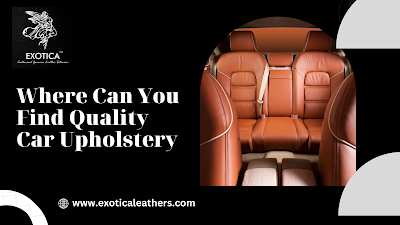How Does Leather Upholstery Compare to Fabric Options in Terms of Durability?
Introduction
When it comes to choosing upholstery for furniture, car interiors, or other applications, durability is often a key consideration. Two popular materials that frequently come to mind are leather and fabric. Both options have their unique advantages and drawbacks, but leather upholstery is often hailed for its long-lasting qualities. This document will explore how leather compares to fabric options in terms of durability, helping consumers make informed decisions based on their lifestyle, preferences, and usage.
Understanding Durability in Upholstery
Durability in upholstery refers to the material's ability to withstand wear, tear, and the effects of everyday use. Factors influencing durability include resistance to staining, fading, scratching, and overall longevity. While both leather and fabric options can be durable, the materials' inherent characteristics can lead to significant differences in performance over time.
Leather Upholstery: Strength and Resilience
Material Composition: Leather is a natural product derived from animal hides. Its unique fibers provide inherent strength, making it resistant to tearing and damage. This durability can be especially beneficial in high-traffic areas or settings where heavy use is expected.
Resistance to Stains and Spills: Leather typically has a smooth surface that makes it easier to wipe clean. While it can absorb spills if not treated promptly, many modern leather upholstery options come with protective coatings that enhance their stain resistance. This quality makes leather a practical choice for homes with pets or young children.
Aging Gracefully: One of the most appealing aspects of leather is its ability to age beautifully. Over time, leather develops a patina that adds character and depth to its appearance. Unlike many fabrics that may fade or wear thin, leather can maintain its aesthetic appeal for decades with proper care.
Maintenance Requirements: While leather is generally durable, it does require some maintenance to retain its qualities. Regular conditioning can prevent it from drying out or cracking, and occasional cleaning with appropriate products can help maintain its luster. However, this maintenance is often less intensive compared to the frequent washing and treatment that fabric upholstery may require.
Fabric Upholstery: Versatility with Trade-offs
Material Varieties: Fabric upholstery comes in a wide range of materials, including cotton, polyester, velvet, and blends. This variety allows for greater customization in terms of color, pattern, and texture. However, the durability can vary significantly depending on the type of fabric chosen.
Vulnerability to Wear and Tear: Many fabric options may not be as resilient as leather, particularly lighter-weight materials. Fabrics can snag, tear, or wear thin, especially in high-usage areas. Natural fibers like cotton can be prone to staining and fading over time, particularly if exposed to direct sunlight.
Ease of Cleaning: Fabric upholstery often requires regular cleaning, which can include vacuuming, spot cleaning, or even professional cleaning services for more thorough maintenance. Some fabrics are treated to be stain-resistant, but this does not guarantee immunity to spills and dirt.
Comfort and Breathability: While fabric upholstery may not always match leather's durability, it can offer better breathability, making it more comfortable in hot or humid environments. Additionally, fabric options can be softer and warmer, appealing to those who prioritize tactile comfort.
Comparative Analysis
When comparing leather and fabric upholstery, it's essential to consider the specific use case. Leather's durability and ease of maintenance make it an excellent choice for areas with high traffic or for those seeking a long-lasting investment. Conversely, fabric upholstery may be more suitable for casual settings where comfort and aesthetics take precedence.
The initial cost of leather can be higher than that of many fabric options, but its longevity often justifies the investment. In contrast, while some fabric options are less expensive upfront, they may require replacement or additional maintenance over time.
Conclusion
In conclusion, both leather and fabric upholstery have their merits and drawbacks in terms of durability. Leather stands out for its strength, stain resistance, and ability to age gracefully, making it a popular choice for those seeking a lasting option. On the other hand, fabric upholstery offers versatility and comfort but may not always match leather's durability.
For More Information:
Call: +91 7829272076
Email: prajwal9164@gmail.com
Website: www.exoticaleathers.com




Comments
Post a Comment